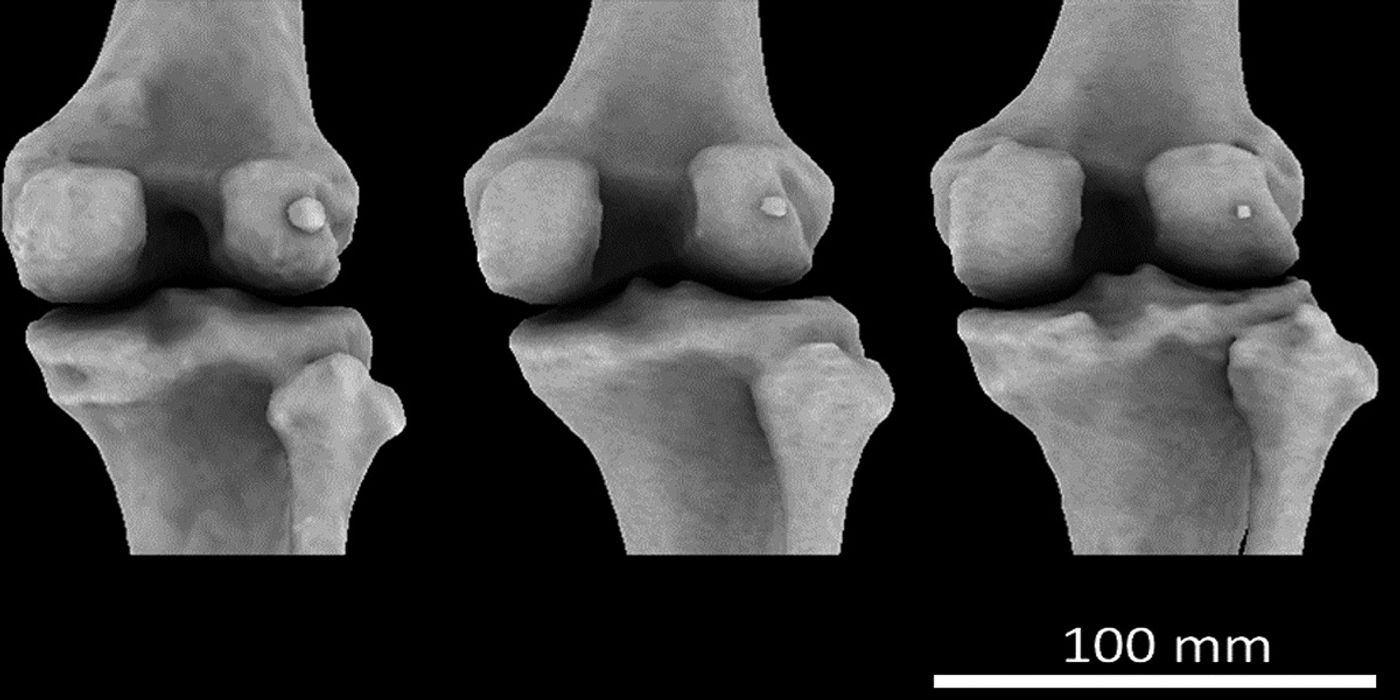Increase in the Prevalence of Fabellae Over 150 Years
Sesamoid bones are embedded in a tendon or muscle, and they are located in areas that have "high mechanical stimuli," such as physical activity, friction, or exercise. Their function is to protect the tendon from injury by decreasing friction. The patella is the largest sesamoid. The fabella is located behind the lateral femoral condyle and is embedded in the tendon of the lateral head of the gastrocnemius muscle. The fabellofibular ligament stabilizes the fabella, and it can also function as an additional origin of a muscle fascicle of the popliteal muscle. While the fabella is commonly seen in non-human mammals, its prevalence in humans varies greatly from 3-87% and is considered a normal anatomical variant. The highest prevalence rates are found in Australians and Asians, and the lowest rates are found in South Americans and Europeans.
Figure 1. Large, medium, and small (L to R) ossified fabellae. Credit: Berthaume, Di Federico, and Bull
Because of this wide variation in the prevalence of the fabella, Michael Berthaume, PhD and colleagues performed a comprehensive literature review to "calculate the prevalence of the fabella in a Korean population and investigate possible temporal shifts in the prevalence rate." Samples were taken from CT scans that had previously been collected. They included 212 knees from 106 Korean individuals, who were between the ages of 21 and 60 and heights between 146 to 178 cm (4' 8" and 5' 8"). Since CT scans don't distinguish between fabellae that are cartilaginous or bony, they didn't make the distinction in the study. "Our literature search yielded 58 studies on fabella prevalence rates from 1875–2018 which met our inclusion criteria," states Michael Berthaume.
After analysis of the data, Berthaume and colleagues "found no increase in prevalence rates of 10 other sesamoid bones in the human body, indicating that the increase in fabella prevalence rate is unique. Fabella presence/absence is due to a combination of genetic and environmental factors: as the prevalence rates of other sesamoid bones have not changed in the last 100 years, we postulate the increase in fabella prevalence rate is due to an environmental factor." The prevalence in Koreans for knees (52.83%) and individuals (44.34%) has increased in the last 80 years.
Even though there has been a significant increase in fabella prevalence, there has not been an increase in other sesamoid bones in the body. "We are unsure why this has occurred," states Berthaume; however, they hypothesize that the increase in height and weight from improved nutrition and increases in tibial length and muscle mass may cause enough mechanical stimuli for the fabella to form and ossify.









